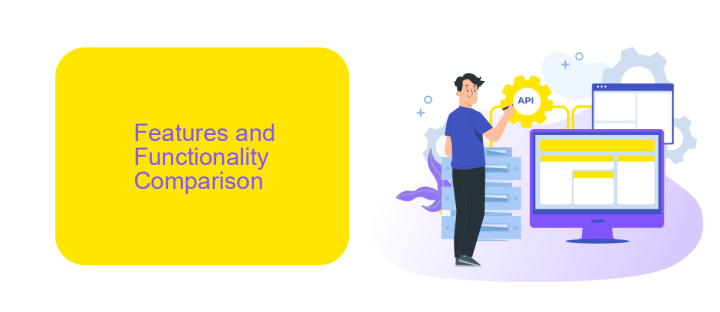Qlik Vs Fivetran
In the rapidly evolving landscape of data analytics and integration, choosing the right tools is crucial for businesses aiming to harness the full potential of their data. This article delves into a comparative analysis of Qlik and Fivetran, two leading solutions that offer distinct features and capabilities. By understanding their strengths and differences, organizations can make informed decisions to optimize their data strategies.
Introduction to Qlik and Fivetran
Qlik and Fivetran are two powerful tools designed to streamline data management and analytics. Qlik is a comprehensive data analytics platform that allows users to explore and visualize data, making it easy to derive insights and make informed decisions. Fivetran, on the other hand, specializes in automated data integration, ensuring that data from various sources is easily accessible and ready for analysis.
- Qlik: Offers advanced analytics capabilities, intuitive data visualization, and robust data integration features.
- Fivetran: Provides seamless data pipelines, automated data extraction, and transformation from multiple sources.
Both Qlik and Fivetran play crucial roles in the data ecosystem, with Qlik focusing on data analysis and visualization, and Fivetran ensuring smooth data integration. For businesses looking to further optimize their data workflows, integrating services like ApiX-Drive can be beneficial. ApiX-Drive facilitates the connection between various applications and services, enhancing the overall efficiency and effectiveness of data management processes.
Features and Functionality Comparison

Qlik offers a robust suite of data analytics tools designed to provide comprehensive insights through interactive dashboards and visualizations. It excels in data integration, allowing users to pull data from various sources and blend it seamlessly. Qlik's associative engine makes it easy to explore data relationships without predefined queries. This flexibility is complemented by advanced AI features that suggest insights and automate tasks, enhancing user productivity and decision-making.
Fivetran, on the other hand, specializes in automated data integration, making it effortless to connect various data sources and transfer data into a centralized warehouse. Its strength lies in its ability to manage and maintain these connections with minimal user intervention, ensuring data is always up-to-date. For businesses looking to streamline their integration processes, services like ApiX-Drive can further simplify the setup and management of these connections, providing a user-friendly interface to automate workflows between different applications and services.
Pricing and Licensing Analysis

When comparing Qlik and Fivetran, pricing and licensing are crucial factors to consider. Both platforms offer different pricing models tailored to their unique functionalities and target audiences.
- Qlik: Qlik operates on a subscription-based model. Pricing varies based on the type of user (analyzer or professional) and the deployment method (cloud or on-premises). Additional costs may include data capacity and advanced analytics features.
- Fivetran: Fivetran uses a consumption-based pricing model, charging based on the volume of data processed. This model is scalable, making it suitable for businesses of all sizes. Fivetran also offers a free trial to help users evaluate the service.
For businesses looking to streamline their data integration processes, using a service like ApiX-Drive can be beneficial. ApiX-Drive offers a flexible and user-friendly platform to automate data transfers between Qlik, Fivetran, and other services, ensuring seamless integration and efficient data management.
Pros and Cons of Each Solution

When comparing Qlik and Fivetran, it's essential to consider the strengths and weaknesses of each solution. Qlik is known for its powerful data visualization and analytics capabilities, making it a favorite among business intelligence professionals. On the other hand, Fivetran excels in data integration and ETL (Extract, Transform, Load) processes, providing seamless data pipeline automation.
Qlik offers a robust platform for creating interactive dashboards and reports, enabling users to gain insights from their data quickly. However, its steep learning curve and higher cost can be a drawback for smaller organizations. Fivetran simplifies the process of data integration by automating the ETL process, but it might lack the advanced analytics features that Qlik provides.
- Qlik Pros: Advanced analytics, interactive dashboards, strong data visualization.
- Qlik Cons: Steep learning curve, higher cost.
- Fivetran Pros: Automated ETL, easy data integration, time-saving.
- Fivetran Cons: Limited advanced analytics, additional tools needed for visualization.
For businesses needing a balanced approach, integrating both solutions can be beneficial. Tools like ApiX-Drive can facilitate this integration, ensuring seamless data flow between Qlik and Fivetran, thus leveraging the strengths of both platforms to achieve comprehensive data management and analytics.
Conclusion and Recommendation
In conclusion, both Qlik and Fivetran offer robust solutions for data integration and analytics, each with its own strengths. Qlik excels in providing a comprehensive data analytics platform with powerful visualization and self-service capabilities, making it ideal for businesses that need in-depth data analysis and interactive dashboards. On the other hand, Fivetran stands out in its simplicity and efficiency for data integration, especially for companies looking to streamline their ETL processes without extensive manual intervention.
For businesses seeking a seamless integration experience, incorporating a service like ApiX-Drive can further enhance their data workflows. ApiX-Drive offers an easy-to-use platform for automating data transfers between various applications, complementing both Qlik’s and Fivetran’s functionalities. Ultimately, the choice between Qlik and Fivetran should be guided by your specific business needs, resources, and the level of data complexity you handle. By leveraging the strengths of these tools and considering additional integration services like ApiX-Drive, organizations can achieve a more efficient and insightful data management strategy.


FAQ
What are the primary differences between Qlik and Fivetran?
Can Qlik and Fivetran be used together?
Which tool is better for real-time data analysis?
Is it easy to set up data integration between Qlik and Fivetran?
What are the alternatives for automating data integration and visualization?
Apix-Drive is a universal tool that will quickly streamline any workflow, freeing you from routine and possible financial losses. Try ApiX-Drive in action and see how useful it is for you personally. In the meantime, when you are setting up connections between systems, think about where you are investing your free time, because now you will have much more of it.

